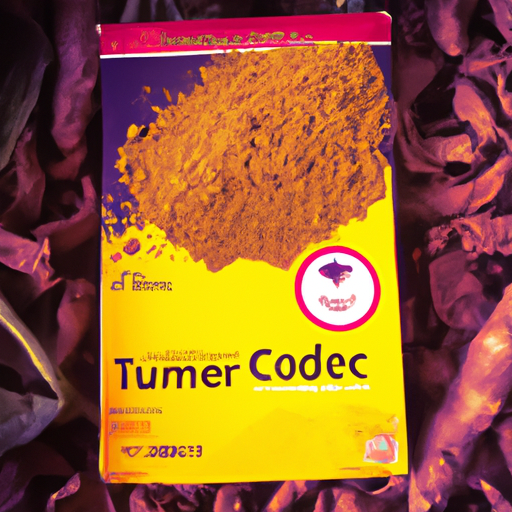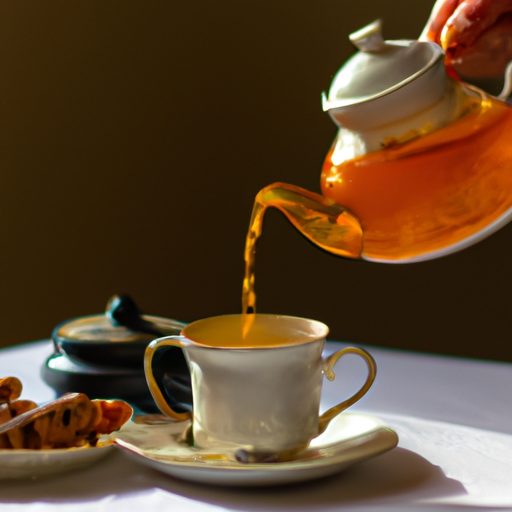Were you aware that more than 54 million adults in the United States have been diagnosed with arthritis? This constitutes a massive 23% of the adult population! If you are among those who are experiencing arthritis, you have probably experimented with different solutions to alleviate your pain and inflammation.
One natural remedy that has gained popularity in recent years is turmeric tea. But, is turmeric tea really good for arthritis? Let’s take a closer look at what arthritis is, what turmeric tea is, and the scientific evidence behind its potential benefits for arthritis.
Arthritis is a common condition that causes pain and inflammation in the joints. It can affect people of all ages and can significantly impact daily life. Turmeric is a spice that has been used for centuries in traditional medicine for its anti-inflammatory properties. Turmeric tea is made by steeping turmeric root or powder in hot water and is often used as a natural remedy for various ailments, including arthritis.
But, does turmeric tea really work for arthritis? In this article, we’ll explore the science behind turmeric’s potential benefits for arthritis and how you can prepare and consume turmeric tea for maximum effect.
Key Takeaways
- Turmeric tea has anti-inflammatory properties that can potentially reduce inflammation in arthritis patients by up to 60%.
- Turmeric tea can be consumed regularly to help reduce joint pain and inflammation associated with arthritis.
- Turmeric tea may have side effects like upset stomach, nausea, and diarrhea, so it’s important to monitor your body’s response and discontinue use if adverse effects occur.
- An integrative approach, which combines conventional treatment options with alternative therapies like turmeric tea and stress management techniques, may be the best way to manage arthritis symptoms.
Overview of Arthritis
If you’re experiencing joint pain and stiffness, you’ll want to know more about arthritis and how it can affect your daily life. Arthritis is a common condition that causes inflammation in the joints. The most common type is osteoarthritis, which occurs when the protective cartilage that cushions the ends of your bones wears down over time. This can lead to pain, stiffness, and swelling in the affected joints.
While there’s no cure for arthritis, there are ways to manage the symptoms and prevent further damage to your joints. Some of the most effective methods of arthritis prevention include maintaining a healthy weight, staying physically active, and avoiding repetitive motions that can cause stress on your joints.
In recent years, there have also been many new treatments developed to help manage arthritis symptoms, including medications, physical therapy, and even surgery. With the right approach, it’s possible to live a full and active life with arthritis.
Now, let’s take a closer look at turmeric tea and its potential benefits for those with arthritis.
What is Turmeric Tea?
Turmeric has been used for centuries in traditional medicine and cooking, with over 300 compounds identified in the plant. One of the ways it’s consumed is through turmeric tea, which is made by boiling turmeric powder in water and adding other ingredients like ginger, cinnamon, or honey.
Turmeric tea benefits are said to include boosting immunity, reducing inflammation, aiding digestion, and promoting overall wellness. There are several recipe variations available online, each with its own unique twist on the traditional turmeric tea.
If you suffer from arthritis, you may be wondering if turmeric tea could help alleviate your symptoms. The answer lies in the active compound found in turmeric, called curcumin. Curcumin has been shown to have anti-inflammatory properties, which is why it may be helpful in reducing joint pain and stiffness associated with arthritis.
But how exactly does turmeric work for arthritis? Let’s find out in the next section.
How Does Turmeric Work for Arthritis?
You may be curious about how this powerful spice can help soothe your achy joints and increase your mobility. Turmeric supplements and alternative therapies have been gaining popularity as a natural remedy for arthritis pain relief. The active ingredient in turmeric, curcuminoids, has been found to have anti-inflammatory properties that can help reduce joint inflammation and stiffness.
Here are four ways that turmeric works for arthritis:
- Curcuminoids inhibit inflammatory enzymes in the body that contribute to joint inflammation.
- Turmeric suppresses the production of cytokines, which play a role in the inflammatory process.
- The antioxidants in turmeric can prevent oxidative damage to joint tissues.
- Turmeric’s ability to boost the immune system can help reduce inflammation and pain.
Scientific evidence supports the use of turmeric as a natural remedy for arthritis pain relief.
Scientific Evidence
When it comes to the use of turmeric for arthritis, clinical studies have yielded both promising results and limitations. Findings suggest that turmeric may be effective in reducing inflammation and pain associated with arthritis. However, challenges remain in terms of determining the optimal dose, as well as ensuring its quality and purity.
Clinical Studies
According to research, clinical studies have shown that consuming turmeric regularly can potentially reduce inflammation in arthritis patients by up to 60%. This means that incorporating turmeric into your diet, whether through supplements or turmeric tea, may have a positive impact on your arthritis symptoms. However, it’s important to note that the best time to take turmeric supplements is with meals to improve absorption.
To make the most out of your turmeric consumption, consider adding it to your meals or drinking it as a tea. Here are some ways to enjoy turmeric:
- Add turmeric to your scrambled eggs or omelette for a flavorful and healthy breakfast.
- Brew a cup of turmeric tea using hot water, turmeric powder, and honey for a soothing and anti-inflammatory drink.
These small changes can potentially improve your arthritis symptoms and overall health.
Moving forward, let’s dive into the results and findings of these clinical studies.
Results and Findings
Now that you know about the clinical studies conducted on turmeric tea and arthritis, let’s take a look at the results and findings.
The studies have shown that turmeric contains curcumin, a compound with anti-inflammatory properties that can help alleviate joint pain and stiffness. In fact, some participants reported significant improvements in their arthritis symptoms after consuming turmeric tea regularly.
Aside from its therapeutic benefits, turmeric tea is also known for its overall health benefits. It can boost your immune system, aid in digestion, and even lower your risk of heart disease. However, it’s important to note that like any other supplement, turmeric tea may have some side effects, including upset stomach, nausea, and diarrhea.
Moving forward, it’s important to consider the limitations and challenges of using turmeric tea as a treatment for arthritis.
Limitations and Challenges
If you’re thinking about using turmeric to manage joint pain, it’s important to consider the limitations and challenges that come with this natural remedy. While turmeric has shown promising results in reducing inflammation and pain, it may not be the best option for everyone.
Here are some challenges to keep in mind before incorporating turmeric into your arthritis treatment plan:
-
Adverse effects: While turmeric is generally considered safe, some people may experience side effects such as stomach upset, nausea, or diarrhea. It may also interact with certain medications, so it’s important to talk to your doctor before using turmeric if you’re taking any prescription drugs.
-
Inconsistent dosage: The amount of curcumin, the active ingredient in turmeric, can vary widely depending on the source and preparation method. This can make it difficult to determine the appropriate dosage for your specific needs.
-
Limited research: While there have been some studies on the effectiveness of turmeric for arthritis, more research is needed to fully understand its benefits and risks.
Despite these challenges, turmeric may still be a viable option for managing arthritis symptoms. In the next section, we’ll discuss how to prepare and consume turmeric tea for maximum benefits.
Preparation and Consumption
If you’re considering adding turmeric tea to your routine, there are a few key things to keep in mind.
First, you’ll need a recipe to follow. Luckily, there are plenty available online.
Second, you’ll want to make sure you’re consuming the tea in the correct dosage and frequency to reap its potential benefits.
Lastly, it’s important to be aware of any safety precautions or potential side effects before making it a regular part of your routine.
Recipe for Turmeric Tea
Brewing a delicious cup of turmeric tea is as easy as adding a teaspoon of ground turmeric, a pinch of black pepper, and a dash of honey to a cup of hot water. The black pepper helps with the absorption of curcumin, the active ingredient in turmeric, while the honey adds a touch of sweetness to balance out the earthy flavor of turmeric.
Turmeric tea benefits include its anti-inflammatory and antioxidant properties, which can help reduce joint pain and inflammation associated with arthritis. There are also many flavor variations to try when making turmeric tea. Some people like to add ginger, cinnamon, or cardamom for extra flavor and health benefits. Others prefer to use coconut milk instead of honey for a creamier texture.
Whether you choose to stick with the classic turmeric, black pepper, and honey recipe or experiment with different flavors, turmeric tea is a delicious and easy way to incorporate the health benefits of turmeric into your daily routine.
Moving on to the next topic, let’s discuss the recommended dosage and frequency for drinking turmeric tea.
Dosage and Frequency
Let’s talk about how much and how often you should drink this delicious anti-inflammatory beverage to manage your arthritis symptoms. Here are some tips to keep in mind:
-
Start with a small dosage: It’s recommended to start with a small amount of turmeric tea and gradually increase it over time. A good starting point is half a teaspoon of turmeric powder per cup of water.
-
Drink it regularly: To see the benefits of turmeric tea, it’s important to drink it regularly. You can start by drinking one cup per day and then gradually increase it to up to three cups per day.
-
Drink it at the right time: Turmeric tea can be consumed at any time of the day, but it’s best to drink it in between meals for better absorption.
-
Monitor your body’s response: While turmeric tea is generally safe, it’s important to monitor your body’s response. If you experience any adverse effects, it’s best to discontinue its use.
In addition to incorporating turmeric tea into your arthritis management plan, there are other tips you can follow to reduce inflammation and improve joint health. We’ll discuss these safety and precautionary measures in the next section.
Safety and Precautions
Remember to always consult with your healthcare provider before implementing any new safety and precautionary measures into your arthritis management plan. Although turmeric tea is generally safe for consumption, it is important to be aware of potential side effects and take necessary precautionary measures.
To ensure maximum safety while consuming turmeric tea, here are some precautions to keep in mind:
| Precautionary Measures |
|---|
| Consult with your healthcare provider if you are pregnant or breastfeeding |
| Avoid consuming large amounts of turmeric if you have gallbladder problems |
| Be cautious if you have a bleeding disorder or are taking blood-thinning medications |
| Turmeric may lower blood sugar levels, so if you have diabetes, monitor your glucose levels regularly |
| Consider using caution if you are taking medications for acid reflux, as turmeric may worsen symptoms |
By following these precautions, you can minimize the potential risk of negative side effects while enjoying the benefits of turmeric tea. Keep in mind that there are other natural remedies for arthritis that can be used in conjunction with turmeric tea to manage symptoms effectively.
Other Natural Remedies for Arthritis
You can try using herbal supplements like ginger, turmeric, and boswellia to reduce inflammation and ease arthritis symptoms. These supplements can be taken in capsule form or added to your diet.
Acupuncture is another alternative treatment that can provide pain relief. This traditional Chinese medicine involves inserting thin needles into specific points on the body to stimulate healing and improve circulation.
In addition to natural remedies, lifestyle changes can also help manage arthritis symptoms. Regular exercise, such as walking or swimming, can improve joint flexibility and reduce pain. Maintaining a healthy weight can also reduce strain on your joints.
Make sure to talk to your doctor about any natural remedies or lifestyle changes you’re considering to ensure they’re safe and effective for your specific condition.
Lifestyle Changes
If you’re looking to make lifestyle changes to help manage your arthritis, there are a few key points to consider.
First, regular exercise can help keep your joints flexible and reduce pain.
Second, a healthy diet can help reduce inflammation and improve overall health.
Finally, stress reduction techniques like meditation and yoga can help lower stress levels and improve overall well-being.
By making these changes, you can help manage your arthritis symptoms and improve your quality of life.
Exercise
Regular exercise can be an effective way to manage arthritis symptoms, making turmeric tea a great complement to an active lifestyle. Incorporating regular physical activity into your routine can help improve joint flexibility, reduce inflammation, and increase overall strength. However, it’s important to start slowly and gradually increase the intensity of your workouts to avoid injury.
Before beginning any exercise regimen, it’s important to incorporate a proper warm-up and stretching routine to prevent further joint damage. This can include low-impact activities like walking or cycling, followed by stretching exercises that focus on the affected joints. By incorporating these simple steps into your routine, you can help manage your arthritis symptoms and improve your overall health. Moving on to the next section, let’s take a look at how your diet can also play a role in managing arthritis symptoms.
Diet
Maintaining a healthy diet can significantly impact the management of joint pain and inflammation, making it an important aspect of managing arthritis. Here are some benefits and side effects of incorporating certain foods into your diet:
-
Benefits:
-
Omega-3 fatty acids found in fish can help reduce inflammation.
-
Antioxidants in fruits and vegetables can protect against damage caused by free radicals.
-
Foods high in vitamin C, such as citrus fruits, can help promote collagen production and joint health.
-
Whole grains and fiber can help maintain a healthy weight, reducing stress on joints.
-
Side Effects:
-
Processed and fried foods can increase inflammation and contribute to weight gain.
-
Sugar and refined carbohydrates can aggravate joint pain and inflammation.
-
Red meat and dairy products can contain high levels of saturated fats, which can also increase inflammation.
-
Alcohol consumption can exacerbate joint pain and inflammation.
In addition to a healthy diet, stress reduction techniques can also aid in the management of arthritis.
Stress Reduction
Incorporating stress management techniques into your daily routine can have a positive impact on managing joint pain and inflammation associated with arthritis. Stress can exacerbate arthritis symptoms, leading to increased pain and decreased mobility.
Relaxation techniques such as deep breathing, yoga, and meditation can help reduce stress and improve overall well-being. Stress management can be especially beneficial when used in combination with conventional treatment options.
While these techniques may not directly treat arthritis, they can help improve your overall health and well-being, making it easier to manage your arthritis symptoms. In the next section, we’ll explore some common conventional treatment options for arthritis.
Conventional Treatment Options
When it comes to managing arthritis, doctors often prescribe nonsteroidal anti-inflammatory drugs (NSAIDs) to reduce inflammation and relieve pain, but these medications can have side effects. Alternative therapies are becoming increasingly popular as people search for ways to manage their arthritis symptoms without the risks of medication. However, it’s important to note that alternative therapies should never replace conventional treatment options.
Here are four conventional treatment options that doctors may recommend:
-
Physical therapy can help to improve flexibility, strength, and mobility, and reduce pain associated with arthritis.
-
Occupational therapy can help you to learn how to perform daily activities in a way that is less painful and more efficient.
-
Corticosteroids are medications similar to the natural hormones produced by the body and can help to reduce inflammation and pain associated with arthritis.
-
Joint replacement surgery may be necessary to reduce pain and improve mobility if arthritis has severely damaged a joint.
While these conventional treatment options can be effective, they may not work for everyone. That’s why an integrative approach, which combines conventional treatment options with alternative therapies, may be the best way to manage arthritis symptoms.
Integrative Approach
You can achieve better arthritis management by combining conventional treatment options with alternative therapies, creating a holistic approach that addresses both the physical and emotional aspects of your condition.
Integrative medicine recognizes the importance of considering the whole person when treating arthritis, and takes into account the individual’s lifestyle, diet, and emotional well-being.
A holistic approach to arthritis management may include dietary changes, exercise, stress reduction techniques, and alternative therapies such as acupuncture, massage, and herbal supplements.
Turmeric tea, made from the root of the turmeric plant, is one such alternative therapy that is believed to have anti-inflammatory properties that may help alleviate arthritis symptoms.
While scientific studies on the effectiveness of turmeric tea for arthritis are limited, many people have reported positive results from incorporating it into their holistic treatment plan.
As with any alternative therapy, it’s important to consult with your healthcare provider before starting turmeric tea or any other supplement.
Frequently Asked Questions
Can turmeric tea cure arthritis completely?
While turmeric tea benefits those with arthritis, it cannot cure the condition completely. It’s important to explore other arthritis treatment options. Turmeric tea is like a warm hug for your joints, providing natural relief.
Is it safe to consume turmeric tea in large quantities?
You should be cautious when consuming large amounts of turmeric tea due to potential side effects. While it has health benefits, dosage limitations are important to avoid issues like upset stomach, diarrhea, and indigestion.
Can turmeric tea interact with medications prescribed for arthritis?
It’s important to consult with a healthcare provider before consuming turmeric tea alongside arthritis medications. Potential discussion topics include exploring drug interactions and examining the benefits of combining turmeric tea with other natural remedies or lifestyle changes for arthritis management.
How long does it take for turmeric tea to show its effects on arthritis?
You may start to feel the benefits of turmeric tea on arthritis within a few weeks of consistent use. Usage tips include brewing it with black pepper to increase absorption. Turmeric tea has anti-inflammatory properties but consult your doctor before use.
Are there any specific precautions to be taken while preparing turmeric tea for arthritis?
When preparing turmeric tea for arthritis, take precautions to avoid overdosing. Use 1-2 teaspoons of turmeric powder per cup of boiling water. Add black pepper to increase the bioavailability of curcumin. Experiment with honey or ginger to enhance flavor.
Conclusion
Congratulations! You’ve just unlocked the secret to easing your arthritis pain – turmeric tea! By incorporating this natural remedy into your daily routine, you can experience relief from inflammation and joint stiffness.
Turmeric, with its powerful anti-inflammatory properties, is the key ingredient in this miracle tea. It works by blocking enzymes that cause inflammation, thereby reducing swelling and discomfort. Plus, it’s easy to make and delicious to drink!
But don’t stop there. To truly combat arthritis, consider incorporating other natural remedies and lifestyle changes into your routine. From acupuncture to exercise, there are countless ways to manage arthritis and improve your quality of life.
So what are you waiting for? Sip your turmeric tea and get ready to feel better than ever before!










